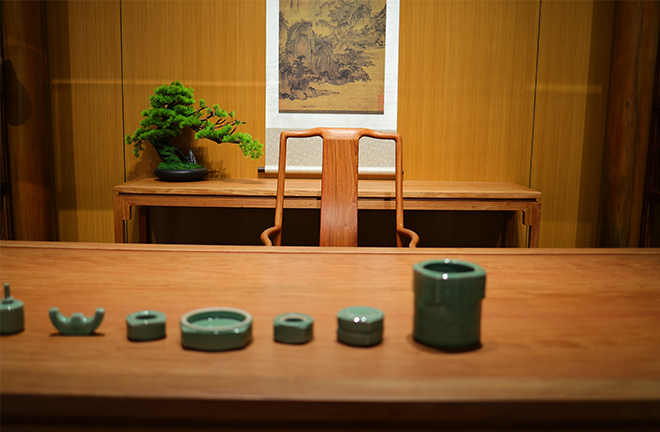Mediated society and the ambidexterity of cultural and tourism integration

Integrating culture and tourism is a great task. Photo: TUCHONG
With the arrival of the digital age, society is continually reshaped by the expansion, pervasiveness, and penetration of media, with the interplay of the real and the virtual becoming a key trend in its development. The integration of culture and tourism is central to high-quality tourism development, and in the mediated era, it has given rise to various developmental paths and social possibilities. This article proposes the ambidexterity of integrating culture and tourism, which is based on the analysis of innovative trends in the mediated society characterized by the intertwining of the real and the virtual, as well as the media-driven integration of culture and tourism.
Mediated society
The “mediated society,” characterized by the entwinement of the real and the virtual, is mainly driven by the internet and other information technologies. The mediated society not only refers to the dramatic increase in the variety and quantity of media, but also the comprehensive expansion and penetration of media content, institutions, and technologies into social life. The media logic originally mainly applicable to mass media institutions now influences a wider range of social institutions and individual lives.
First, the relational connections within the mediated society have undergone profound changes. In the mediated society, boundaries of social connections have been expanded, information sharing promoted, and the pace of connection building accelerated.
Second, spatial production in the mediated society has undergone profound changes as well. The boundaries between virtual and real spaces are continuously blurred. Discontinuous and heterogeneous spaces are constantly created within the interfaces of mobile networks and portable devices. The medium is not only a representation and continuation of space, but also serves as an important infrastructure in the digital age. Media facilities are embedded in daily spaces, reshaping contemporary lifestyles, placing us in a genuinely interwoven real and virtual space. The trend of media innovation in cultural and tourism integration within the intertwined mediated society has expanded the connotations of tourism activities and the richness of tourism experiences in unprecedented ways. The integration of culture and tourism has generated new trends. Firstly, media empower both tourists and tourism professionals simultaneously. The former become “prosumers,” while the latter gain a larger platform. Secondly, the mediated society empowers the tourism industry, facilitating updates from products to management, thereby providing culture with more presentation forms and expression spaces. In the development of virtual tourism and immersive products, high-quality and highly reputable products such as Team lab and the immersive experiences at the China Grand Canal Museum have already emerged.
Ambidexterity
The ambidexterity theory is an emerging theory in management studies. The ambidexterity of cultural and tourism integration refers to the dialectical unity of culture and tourism, transcending the traditional notion of culture as the soul of tourism and tourism as the carrier of culture, known as the “soul-carrier theory.” This ambidexterity of cultural and tourism integration vividly reflects the characteristics of the mediated society.
At the theoretical level, it breaks away from traditional binary oppositions such as virtual and real, production and consumption, remote and daily, and history and reality, transforming the separate governance of culture and tourism into a unified duality. In the context of the mediated society, culture is inherited and disseminated through tourism. Everyday foods like Zibo barbecue and Tianshui spicy hotpot, initially unremarkable, gained prominence as these cities entered the public eye through tourism and their respective charms were highlighted. Similarly, tourism activities, due to their cultural nature, distinguish themselves from typical leisure pursuits. The question people care about is changing from “how” to “why,” and the emotional power of culture is fully manifested in the pursuit of meaning. As city walks, food market strolls, and leisurely walks in the park become increasingly more commonplace and de-ritualized, tourists are no longer concerned with how many scenic spots they have visited but rather what meaning they can gain from these experiences.
On a practical level, ambidexterity places cross-border innovation at the forefront. Organizational innovation arises both from leveraging existing resources through cross-border cooperation to spark ideas, and from responding to new needs and demands by developing novel organizational capabilities.
In the ambidexterity of cultural and tourism integration, culture and tourism are interdependent, forming an indivisible whole. Only by overcoming the controversy of “who integrates with whom” can we better understand the characteristics of cultural inheritance and communication in the present and create tourism products with diverse cultural experiences and foster value co-creation.
Cross-border innovation is the key to achieving the ambidexterity of cultural and tourism integration. Organizations must be willing to break boundaries to achieve the orderly and effective flow of knowledge, technology, and human resources, while responding promptly to new market trends and needs to create compelling and innovative tourism experiences.
Sun Jiuxia is a professor from the School of Tourism Management at Sun Yat-sen University.
Edited by ZHAO YUAN

 PRINT
PRINT CLOSE
CLOSE